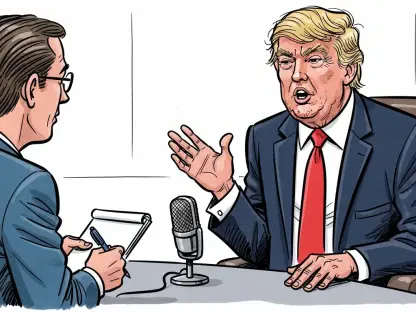In a significant fiscal shift, the White House’s proposal to rescind $9.4 billion has sparked a national debate about the realignment of U.S. spending priorities. At the core of this move are sweeping cuts across various sectors, reflecting a long-standing push for more disciplined fiscal policies. As the nation stands on this fiscal precipice, opinions abound regarding potential effects on domestic and international fronts.
A Shifting Fiscal Landscape: Understanding the $9.4B Rescission
The foundation of U.S. fiscal conservatism provides context for this recent move. Historically, Republican leaders have championed budgetary reductions, with an eye toward minimizing government spending. The current $9.4 billion rescission aligns with these principles, aimed at scaling back both foreign aid and domestic funding ventures.
In today’s political environment, this cut assumes a broader significance. While some see it as a necessary recalibration of American fiscal policy, others view it as an overreach that might hinder diplomatic and developmental initiatives globally. The implications of such decisions may redefine how the U.S. navigates foreign and domestic responsibilities.
The Anatomy of Financial Reformation: Exploring Key Components
Cutting Through the Noise: Dissecting Foreign Aid Reductions
An integral facet of the rescission is its heavy cut to foreign aid, a move generating mixed responses. Advocates argue that these reductions eliminate funds from sectors deemed inefficient, focusing instead on direct benefits to national interests. Critics, however, warn that chipping away at these allocations could impair diplomatic relations and global health projects. Some experts suggest that foreign aid serves dual purposes—advancing humanitarian goals while also strengthening national security. This dual role complicates the dialogue around its fiscal retraction.
Domestic Reductions: Public Broadcasting in the Crosshairs
Another area deeply affected by the proposed rescission is public broadcasting. Cuts to the Corporation for Public Broadcasting are believed to stem from a need to revisit government roles in media funding, particularly as the industry contends with changing media consumption habits. According to specialists, such funding scaling back might inspire innovation in public media, urging entities to adapt to alternative funding models. However, concerns linger about potential risks to content diversity and accessibility.
Implications and Innovations: Emerging Trends in Fiscal Policy
The financial reforms presented by the White House are stimulating new trends in fiscal strategies. In these evolving fiscal times, states are grappling with varying impacts based on their reliance on federal funds. Some can weather the storm of funding cuts better than others. As spending priorities shift, long-standing fiscal ideals are tested, challenging traditional approaches to economic governance and facilitating new frameworks.
When Policy Meets Perspective: Broadening the Debate
In the broader debate, tensions emerge between focal points of fiscal conservatism and globalization. Perspectives from across the political and social spectrum highlight the rescission’s potential reverberations. While fiscal conservatives praise the move as a step toward reduced government overreach, proponents of globalization emphasize the need for interconnectedness. This ideological sparring coexists with an analysis of possible future scenarios stemming from these shifts, encouraging further exploration and public discourse.
From Insights to Actions: Applying Fiscal Learnings Today
The insights gathered from this discussion highlight a need for strategic adaptation. Policymakers, NGOs, and other stakeholders face the task of maneuvering through the altered fiscal landscape. Emphasizing resource optimization, practical steps are advised to better align with evolving spending frameworks. This requires a concerted effort at revising existing policies and integrating new economic strategies.
Closing Thoughts: The Lasting Impact of Fiscal Decisions
The $9.4 billion rescission emerged as a pivotal fiscal decision, influencing U.S. economic policies and international relations profoundly. This move set the stage for potential new precedents in governmental budgeting and spending practices. In the pursuit of a more streamlined governmental operation, these decisions might have forged a path that future legislation could follow. The reshaping of spending priorities offers a glimpse into a future where fiscal restraint and strategic investment are key. As the conversation continues, the landscape of U.S. fiscal policy remains dynamic and full of potential revelations.









